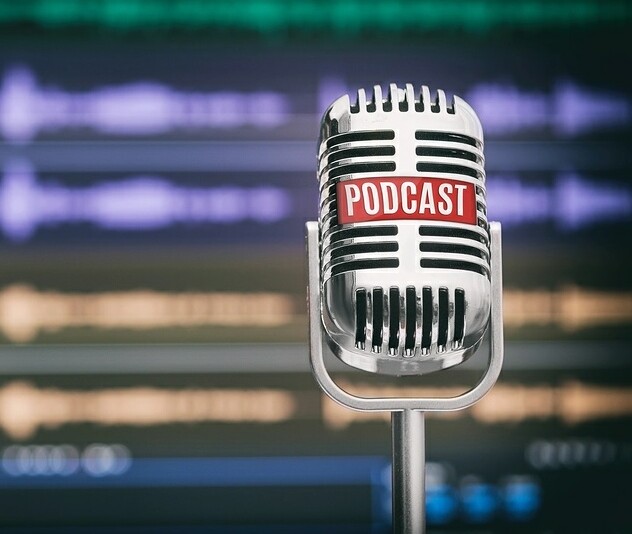Podcast Paradox: Mainstream and Niche at the Same Time

There’s been a lot of movement in the podcast space, with several big players making hefty investments. SiriusXM adds Stitcher, a longtime pioneer in podcasting, to its leading audio entertainment platform, alongside Pandora, Simplecast and AdsWizz. Spotify spent the past two years acquiring podcast networks and exclusive rights to popular podcasts, such as The Joe Rogan Experience. In the past two weeks, Amazon announced the acquisition of podcast network Wondery and Twitter is acquiring podcasting platform Breaker.
Should podcasting still be considered new media? Or, is it mainstream? How many people listen to podcasts? Who listens and why? What is the opportunity for advertisers and for publishers? There are lots of questions to answer and many insights to share. Let's dig in.
We are witnessing the transition of podcasts from a niche medium to an emerging mainstream media channel.
More than Half of Adults Under 50 are Listening to Podcasts
While reduced commuting due to COVID-19 cut into radio listening -- traditional and streaming -- podcast listening continued to grow in 2020. Podcast listening grew across all age groups, although it is higher among younger adults. We've now reached the point where 50% or more of adults under 50 are listening to podcasts; more than 40% of all adults.

We saw audience growth for podcasts, with increases of about +15% of monthly, weekly and daily podcast listeners.

Dissimilar to the double growth we've seen for streaming video, with increases in both audience size (+8%) and in time spent (+12.7), the number of podcast listeners grew (+19%) but the average time spent listening to podcasts (+5%) remained consistent with last year overall and across age groups.

If your audience is under 50, podcasts should definitely be in consideration for your media mix for advertising or content distribution. Listeners are tuning in, and with greater frequency, which opens the doors for marketers to not just tell a story but create a relationship when listeners are actively listening.
Being educated and informed are the top reasons for listening to podcasts, making it more of a migration from visual to audio (within print) than part of the music-driven audio on an advertising campaign's media plan.
Podcasts are Not the New Radio, Yet …
Unlike traditional radio, which is predominantly listened to in the car, podcasts are listened to as much at home as when out and about. In fact, "doing household chores" and "cooking/baking" are the No. 1 and No. 3 occasions for listening to podcasts.

Different from other media, where we saw shifts due to COVID-19 (i.e., a decline in listening to radio in the car or an increase in daytime TV viewing), there were no dramatic shifts in when people listen to podcasts as a result of the pandemic -- just a slight decline in listening while commuting (29% to 27%) and a slight increase during cooking/baking (17% to 21%).

During a year when pandemic and politics created stress and many of our normal activities were off-limits, it makes sense that listening to podcasts "to relax" and "to distract myself" increased in 2020.
Marketers, as you consider the role of podcasts in your marketing plans ... and the role of your brand in podcasts ... understanding why consumers are listening to them helps refine those roles. Is it entertaining or informative? What messaging will resonate best in that context?
While listening to podcasts becomes a mainstream activity, the podcast landscape itself remains more niche than mainstream.
Podcast Listening Is Diverse and Personal
News & Politics leads as the most listened-to genre of podcasts, with over one in three podcast listeners regularly listening, followed by Comedy & Music with just under one in four listening regularly. But overall, podcast listening is driven by personal interests.

The most dramatic difference we saw in our analysis was the podcast genres by age group. News & Politics was a top genre across all groups, but Comedy is higher among adults under 50, Science & Technology are markedly higher among adults 18-34, while Religion & Spirituality is a Top 3 genre among adults over 50 and Health & Living rises to the Top 10 among adults 65+.

Despite the apparent fragmentation, once you've identified the specific audience for your campaign, determining where to focus your presence in podcasts is a lot easier. And consolidation of podcast programming into large networks will continue to make audience targeting and buying easier.
Leveraging data to understand the role of podcasts in your consumers' life is key to creating contextual relevance and effectiveness for your brand in podcasts, whether you're advertising or creating content.
It's a challenging time for marketers, but up-to-date data is available and helps a lot. Media fragmentation has not slowed down, and marketers must build reach and frequency with purpose.Contact me if you're interested in seeing this data, and more, broken out for your specific target audiences, brands, etc. I'm here to strategize and help.
Click the social buttons above or below to share this content with your friends and colleagues.
The opinions and points of view expressed in this content are exclusively the views of the author and/or subject(s) and do not necessarily represent the views of MediaVillage.com/MyersBizNet, Inc. management or associated writers.


